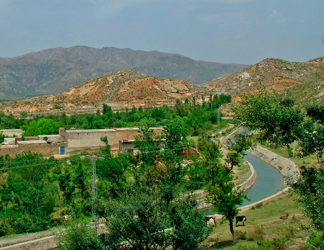Our assistant Maria continues with the series of low-cost Asian countries. Today she has studied Pakistan.
After years of war and social turmoil, strong economic development may not be the first thing that comes to mind at the mention of Pakistan. But the country has, over the years, maintained a solid level of production.
Textile remains the largest industry
Pakistan maintains its status in the international market as an important producer in several industries. Its textile industry is the 8th largest in Asia. This sector is the largest manufacturing industry in Pakistan, contributing to around 9.5% of the country’s total GDP, and with over 15 million workers, is the second largest source of employment.
As the 4th largest producer of raw cotton and cotton yarn in Asia, the country also contributes to about 5% of the world spinning capacity. Most of Pakistan’s textile produce comes from the Punjab province.
The country is also a known producer of various textile products, including towels, rugs, carpets, ready-to-wear garments, bed sheets, and knitwear. These products comprise a significant portion of Pakistan’s exports, with the US as a major source of demand.
Food and agriculture feed much of the country’s economy
Even without taking cotton products into account, agricultural products are a significant segment of Pakistan’s exports. Two of its greatest natural resources are arable land and water, helping it lead in the production of crops like rice, sugarcane, wheat, apricots, mangoes, dates, and onions. In order to raise the quality of crops produced, Pakistan has reduced its use of harmful pesticides.
Livestock contributes half of the value added to the entire agricultural sector. Pakistan’s national herd is composed of cattle, buffaloes, sheep, goats, and camels. The country also has a sizable poultry sector. This enabled Pakistan to become the fourth largest producer of milk in the world, and to produce eggs, various meats, and leather products.
Mining, quarrying, and fuel production possess very high potential.
Pakistan is also recognized for its deposits of minerals, ores, gas, and oil. These led to the development of its mining and quarrying industries, as well as to a number of efforts to explore and make use of its fuel reserves.
The Balochistan province is one of the richest in the country in terms of mineral, oil, and gas deposits. In its southern part are deposits of chromite, iron, zinc, and copper. The province’s Rekko Diq area is counted among the top seven copper reserves in the world, producing 200,000 tons of copper every year. The area also produces 400,000 ounces of gold annually.
Pakistan is also a leading producer of marble, with Khyber Paktunkhwa at the fore. Production in the province accounts for 78% of production in the country. In fact, much of the marble exported to European countries come from Pakistan.
Other notable minerals mined or quarried in Pakistan include gypsum, limestone, silver, precious stones, coal, graphite, silica, and the finest granite and slate. The Punjab province is also known for its large deposits of pure salt, the largest in the world.
Major ports are in much need of upgrades
There are several important ports in Pakistan, the largest of which is Karachi Port. Located between the towns of Kiamari and Saddar in Karachi, Pakistan, it is the center of Pakistan’s economic activities. It handles about 98% of all foreign trade. The port’s management has recently divided the port into the East and West Wharves to enhance the port’s efficiency.
Located still in Karachi, along the coast of the Arabian Sea, Port Qasim is the second most important port handling foreign trade in Pakistan. The port specializes on bulk cargo and serves to reduce the pressure on Karachi Port. It has to be developed, however, in order for it to function as intended.
The Gwadar port is under construction and development and might play a large role in Pakistan’s import/export business. It is operated by a Chinese state-owned company.
Aside from ports, transportation and infrastructure play a major role in ensuring that products are delivered to consumers. While functional, Pakistan’s transport sector faces many challenges. Many of its roads are in poor condition and are considered unsafe. Its trucking system is composed of old units, rendering travel time from one point to another at least three to four times longer than in Europe. Its ports, on the other hand, may have seen improvement in their operations, but they remain quite incapable of sufficiently handling the daily demands and traffic.
Cost of labor is slowly rising
In 2013, the government announced a raise in the country’s minimum wage from Rs8,000 to Rs10,000 (83 USD to 104 USD) for unskilled workers. The Punjab and Khyber Paktunkhwa provinces also raised their minimum wage from Rs9,000 to Rs10,000 (94 USD to 104 USD). Meanwhile, the Sindh and Balochistan provinces decided to retain their existing minimum wage scheme from Rs8,000 (83 USD) and Rs9,000 (94 USD), respectively.

